APS 2015 Annual Report Download - page 71
Download and view the complete annual report
Please find page 71 of the 2015 APS annual report below. You can navigate through the pages in the report by either clicking on the pages listed below, or by using the keyword search tool below to find specific information within the annual report.-
 1
1 -
 2
2 -
 3
3 -
 4
4 -
 5
5 -
 6
6 -
 7
7 -
 8
8 -
 9
9 -
 10
10 -
 11
11 -
 12
12 -
 13
13 -
 14
14 -
 15
15 -
 16
16 -
 17
17 -
 18
18 -
 19
19 -
 20
20 -
 21
21 -
 22
22 -
 23
23 -
 24
24 -
 25
25 -
 26
26 -
 27
27 -
 28
28 -
 29
29 -
 30
30 -
 31
31 -
 32
32 -
 33
33 -
 34
34 -
 35
35 -
 36
36 -
 37
37 -
 38
38 -
 39
39 -
 40
40 -
 41
41 -
 42
42 -
 43
43 -
 44
44 -
 45
45 -
 46
46 -
 47
47 -
 48
48 -
 49
49 -
 50
50 -
 51
51 -
 52
52 -
 53
53 -
 54
54 -
 55
55 -
 56
56 -
 57
57 -
 58
58 -
 59
59 -
 60
60 -
 61
61 -
 62
62 -
 63
63 -
 64
64 -
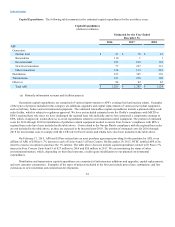 65
65 -
 66
66 -
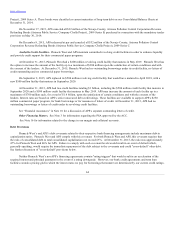 67
67 -
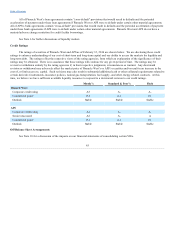 68
68 -
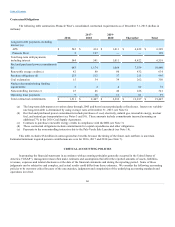 69
69 -
 70
70 -
 71
71 -
 72
72 -
 73
73 -
 74
74 -
 75
75 -
 76
76 -
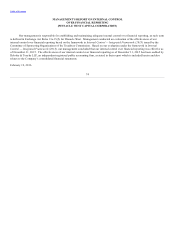 77
77 -
 78
78 -
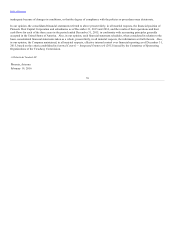 79
79 -
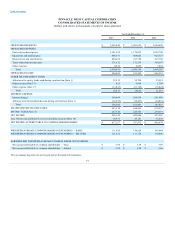 80
80 -
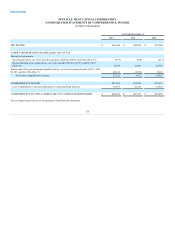 81
81 -
 82
82 -
 83
83 -
 84
84 -
 85
85 -
 86
86 -
 87
87 -
 88
88 -
 89
89 -
 90
90 -
 91
91 -
 92
92 -
 93
93 -
 94
94 -
 95
95 -
 96
96 -
 97
97 -
 98
98 -
 99
99 -
 100
100 -
 101
101 -
 102
102 -
 103
103 -
 104
104 -
 105
105 -
 106
106 -
 107
107 -
 108
108 -
 109
109 -
 110
110 -
 111
111 -
 112
112 -
 113
113 -
 114
114 -
 115
115 -
 116
116 -
 117
117 -
 118
118 -
 119
119 -
 120
120 -
 121
121 -
 122
122 -
 123
123 -
 124
124 -
 125
125 -
 126
126 -
 127
127 -
 128
128 -
 129
129 -
 130
130 -
 131
131 -
 132
132 -
 133
133 -
 134
134 -
 135
135 -
 136
136 -
 137
137 -
 138
138 -
 139
139 -
 140
140 -
 141
141 -
 142
142 -
 143
143 -
 144
144 -
 145
145 -
 146
146 -
 147
147 -
 148
148 -
 149
149 -
 150
150 -
 151
151 -
 152
152 -
 153
153 -
 154
154 -
 155
155 -
 156
156 -
 157
157 -
 158
158 -
 159
159 -
 160
160 -
 161
161 -
 162
162 -
 163
163 -
 164
164 -
 165
165 -
 166
166 -
 167
167 -
 168
168 -
 169
169 -
 170
170 -
 171
171 -
 172
172 -
 173
173 -
 174
174 -
 175
175 -
 176
176 -
 177
177 -
 178
178 -
 179
179 -
 180
180 -
 181
181 -
 182
182 -
 183
183 -
 184
184 -
 185
185 -
 186
186 -
 187
187 -
 188
188 -
 189
189 -
 190
190 -
 191
191 -
 192
192 -
 193
193 -
 194
194 -
 195
195 -
 196
196 -
 197
197 -
 198
198 -
 199
199 -
 200
200 -
 201
201 -
 202
202 -
 203
203 -
 204
204 -
 205
205 -
 206
206 -
 207
207 -
 208
208 -
 209
209 -
 210
210 -
 211
211 -
 212
212 -
 213
213 -
 214
214 -
 215
215 -
 216
216 -
 217
217 -
 218
218 -
 219
219 -
 220
220 -
 221
221 -
 222
222 -
 223
223 -
 224
224 -
 225
225 -
 226
226 -
 227
227 -
 228
228 -
 229
229 -
 230
230 -
 231
231 -
 232
232 -
 233
233 -
 234
234 -
 235
235 -
 236
236 -
 237
237 -
 238
238 -
 239
239 -
 240
240 -
 241
241 -
 242
242 -
 243
243 -
 244
244 -
 245
245 -
 246
246 -
 247
247 -
 248
248 -
 249
249 -
 250
250 -
 251
251 -
 252
252 -
 253
253 -
 254
254 -
 255
255 -
 256
256 -
 257
257 -
 258
258 -
 259
259 -
 260
260 -
 261
261 -
 262
262 -
 263
263 -
 264
264
 |
 |

Table of Contents
The following chart reflects the sensitivities that a change in certain actuarial assumptions would have had on the December 31,
2015 other postretirement benefit obligation and our 2015 reported other postretirement benefit expense, after consideration of amounts
capitalized or billed to electric plant participants, on Pinnacle West’s Consolidated Statements of Income (dollars in millions):
Increase (Decrease)
Actuarial Assumption (a)
Impact on Other
Postretirement
Benefit
Obligation
Impact on Other
Postretirement
Benefit Expense
Discount rate:
Increase 1%
$ (84)
$ (3)
Decrease 1%
107
6
Healthcare cost trend rate (b):
Increase 1%
100
9
Decrease 1%
(80)
(6)
Expected long-term rate of return on plan assets – pretax:
Increase 1%
—
(4)
Decrease 1%
—
4
(a) Each fluctuation assumes that the other assumptions of the calculation are held constant while the rates are changed by one
percentage point.
(b) This assumes a 1% change in the initial and ultimate healthcare cost trend rate.
See Note 7 for further details about our pension and other postretirement benefit plans.
Fair Value Measurements
We account for derivative instruments, investments held in our nuclear decommissioning trust fund, certain cash equivalents,
and plan assets held in our retirement and other benefit plans at fair value on a recurring basis. Fair value is the price that would be
received to sell an asset or paid to transfer a liability in an orderly transaction between market participants at the measurement date. We
use inputs, or assumptions that market participants would use, to determine fair market value. We utilize valuation techniques that
maximize the use of observable inputs and minimize the use of unobservable inputs. The significance of a particular input determines
how the instrument is classified in a fair value hierarchy. The determination of fair value sometimes requires subjective and complex
judgment. Our assessment of the inputs and the significance of a particular input to fair value measurement may affect the valuation of
the instruments and their placement within a fair value hierarchy. Actual results could differ from our estimates of fair value. See Note
1 for a discussion on accounting policies and Note 13 for fair value measurement disclosures.
OTHER ACCOUNTING MATTERS
During the fourth quarter of 2015, we early adopted two new accounting standards related to balance sheet presentation of debt
issuance costs, and balance sheet presentation of deferred income taxes. The adoption of these standards did not impact our results of
operations or cash flows.
During the first quarter of 2016, we will be adopting new consolidation accounting guidance. We do not expect the adoption of
this guidance to have a material impact on our financial statements.
68
